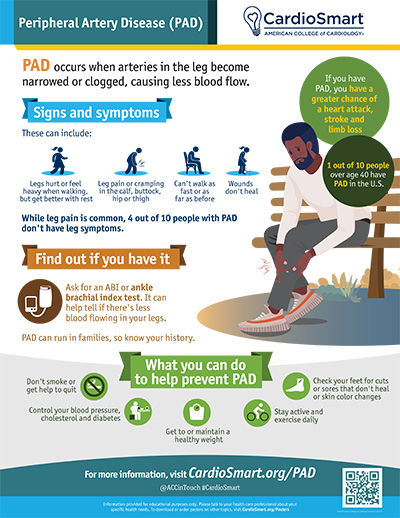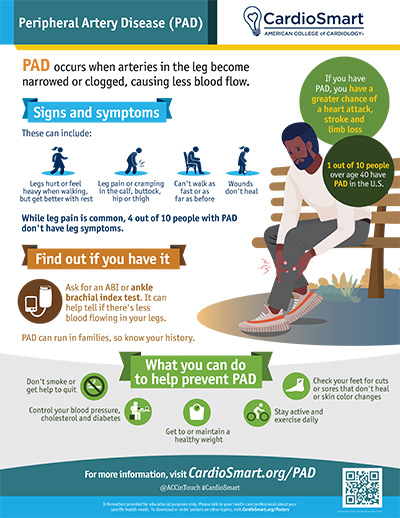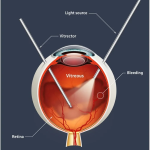
Understanding Peripheral Artery Disease: An Overview
Peripheral Artery Disease (PAD) is a progressive atherosclerotic condition that affects more than ten million people in the United States. This condition is characterized by partial or complete obstructions in one or more peripheral arteries, most commonly found in the lower limbs. PAD develops from the same underlying factors that contribute to heart disease, including hypertension, high cholesterol and triglyceride levels, diabetes, smoking, sedentary lifestyles, family history, obesity, and advanced age.
Despite its prevalence, the awareness of PAD remains low among both patients and some healthcare professionals. This underestimation often leads to delayed diagnosis and treatment, which in turn may result in more serious outcomes, such as non-traumatic leg amputations. The role of healthcare innovation in diagnosing and treating PAD has never been more critical. Today, advances in both traditional and modern medical techniques are helping clinicians get into the tricky parts of vascular disease diagnosis and treatment, ensuring that fewer lives are adversely affected by this condition.
The purpose of this editorial is not only to offer insight into the current state of PAD and its related complications but also to emphasize the importance of prevention, early intervention, and the continuous evolution of treatment strategies in vascular care. By highlighting technological innovations and preventive measures, I hope to shed light on the super important ways we can improve outcomes for those at risk.
Recognizing the Warning Signs of PAD and the Importance of Early Intervention
One of the most concerning aspects of PAD is its subtle entry into the body. Symptoms can include calf pain during short walks, nighttime foot pain, and wounds that heal slowly. In some cases, patients experience darkened skin or other less obvious indicators, meaning that the early, confusing bits of the disease can easily be overlooked. The condition has often remained underidentified until a wound or a severe blockage forces the issue, which can quickly escalate into severe complications.
Early detection is absolutely key to addressing PAD. The reality is that neglecting the early signs can lead to irreversible damage, and the statistics are telling. Below-knee amputation rates have increased notably over the past decade, and the cost in human terms is equally disturbing, with over 5.6 million Americans now living with limb loss. This makes the case for preventative strategies and screening programs among at-risk populations—especially those in rural areas or communities with limited access to advanced healthcare services—more critical than ever.
For those of us working in the medical field, it is super important that we take the time to educate patients about the warning signs and encourage regular check-ups. Addressing these subtle details at an early stage could mean avoiding the overwhelming and sometimes nerve-racking challenges later on.
Innovative Diagnostic Advances and Imaging Techniques in Vascular Care
Modern medicine has witnessed remarkable progress in diagnostic imaging for vascular diseases like PAD. With advancements in technology, clinicians are now better equipped to poke around and get into the nitty-gritty of arterial and venous health, ensuring a more accurate diagnosis. Technologies such as ultrasounds, Magnetic Resonance Angiography (MRA), Computerized Tomographic Angiography (CTA), and traditional angiograms provide detailed images that allow healthcare professionals to pinpoint blockages and detect other subtle misbehaviors in the circulatory system.
This improved visualization not only helps in diagnosing PAD earlier but also assists in planning the best treatment options. For instance, advanced imaging allows for a combined use of open and endovascular techniques during surgeries. These approaches often require healthcare teams to steer through a maze of complicated pieces and tangled issues, but the improved images help make the process smoother and more accustomed to targeted therapy.
Below is a summary of the key imaging techniques currently in use and their advantages:
- Ultrasound Imaging: Non-invasive, real-time imaging that helps monitor blood flow and identify plaque accumulation.
- MRA (Magnetic Resonance Angiography): Provides detailed images without using ionizing radiation, ideal for complex cases.
- CTA (Computerized Tomographic Angiography): Offers high-resolution images that are critical for detecting fine details in blockages.
- Conventional Angiography: The gold standard for evaluating the extent and location of arterial disease.
These diagnostic tools are more than just technical advances; they have become central in helping clinicians figure a path toward effective treatment plans that can even prevent the progression to limb loss.
Pioneering Approaches in Vascular and Endovascular Surgery
The evolution of vascular and endovascular surgery has been striking. What used to be straightforward procedures of suturing bleeding vessels to control hemorrhages has now progressed into sophisticated interventions that rely on tiny catheters and wires—sometimes as delicate as human hair.
Modern vascular surgery combines open and endovascular techniques that are facilitated by advanced imaging technology. This dual approach addresses a range of conditions, including aneurysms, carotid disease, venous disorders, blockages, and even injuries from trauma. Many of these procedures require a deep understanding of the fine points of both traditional surgical methods and cutting-edge technologies.
Notable procedures that have redefined how PAD is treated include:
- Percutaneous Femoral Bypass (Detour Procedure): A minimally invasive technique that reroutes blood flow around blockages, reducing the need for large incisions.
- Deep Vein Arterialization (Lim Flo): A promising treatment that helps stimulate blood flow in cases where traditional arterial paths are compromised.
- Intravascular Ultrasound: Used to guide intervention by providing imagery from within the artery or vein, ensuring precise treatment of the affected area.
These procedures highlight how the field has come a long way, offering new hope especially for patients with advanced or complicated disease. The merging of art and science in vascular care—balancing traditional surgical methods with modern technology—has proved to be a breakthrough in managing the tricky parts of vascular diseases.
The Role of Preventative Measures and Early Intervention Strategies
Prevention remains a core principle in the management and treatment of PAD. With the growing burden of the disease, it is critical that healthcare providers focus on strategies that stymie the initial progression of atherosclerosis. Prevention must be prioritized alongside innovative treatments, as both approaches offer significant benefits for patients.
Early intervention can significantly lower the risk of complications, including limb loss. It involves a dual focus on lifestyle modifications and medical interventions:
- Managing Chronic Conditions: Newer treatments for diabetes, hypertension, and high cholesterol are central to slowing the progression of PAD. These treatments, often combined with blood thinners, help patients avoid the nerve-racking need for invasive interventions.
- Lifestyle Changes: Encouraging regular exercise, smoking cessation, and dietary adjustments plays an essential role in managing overall vascular health.
- Regular Screenings: Routine check-ups for those at risk can help catch the subtle signs of PAD early, before they develop into more severe and intimidating issues.
Implementing community-based screening programs, especially within minority communities and rural areas, where PAD is more common, can also contribute significantly to early detection. These initiatives not only empower patients by providing early warning but also assist healthcare professionals in identifying high-risk individuals.
In this context, prevention is not a one-size-fits-all approach. It is a dynamic, evolving practice that requires continuous adaptation to new research findings and technological advances. The overlap between lifestyle medicine and clinical intervention is a testament to how essential a holistic approach is in combating PAD and its related complications.
Emerging Technologies in Vascular Treatments
The field of vascular medicine is in the midst of a technological revolution. New devices, procedures, and therapies are emerging, each designed to tackle the tangled issues of arterial blockages and improve patient outcomes. These innovations are not merely incremental improvements; they represent a paradigm shift in how we treat PAD.
Some of the most promising emerging technologies include:
| Treatment | Description | Benefits |
|---|---|---|
| Specialty Coated Balloons | Balloon catheters coated with medications to prevent scarring within the treated area. | Minimizes re-blockage and improves vessel patency. |
| Intravascular Lithotripsy (Shockwave) | Uses sound waves to break up hardened, calcified blockages within the arteries. | Improves flexibility and reduces the need for more invasive procedures. |
| Dissolvable Stents | Temporary stents that dissolve, reducing the risk of stent fracture or collapse. | Eliminates long-term complications associated with permanent implants. |
| Atherectomy Catheters | Devices that “shave off” plaque from the arterial walls. | Helps restore blood flow without major surgery. |
Beyond these devices, there is also innovation in compression pumps, such as the ArtAssist® system, which has garnered recent payment approvals. This technology helps regenerate arterial flow in smaller blood vessels, offering another avenue to preserve limb function and improve circulation in patients suffering from PAD.
Furthermore, advances in wound care continue to evolve. Hyperbaric Oxygen Treatment and a variety of specialty dressings work together to accelerate healing for patients with chronic wounds—a significant concern in advanced PAD cases.
Collectively, these advancements represent a comprehensive approach to managing PAD with a focus on both immediate treatment and long-term patient wellness. They illustrate how modern interventions are designed not only to address the current state of the disease but also to prevent its progression. Healthcare professionals now have an expanded toolkit to steer through both the tangible and subtle challenges that PAD presents.
The Critical Importance of Multidisciplinary Care in Managing PAD
Addressing Peripheral Artery Disease requires a team approach. Given the tangled issues associated with the condition—the intertwining of chronic disease, lifestyle factors, and technological challenges—a multidisciplinary care model has become indispensable.
Key components of a comprehensive care plan for PAD include:
- Vascular Surgeons and Interventional Radiologists: These specialists provide expert care using both surgical and endovascular techniques.
- Cardiologists and Endocrinologists: Collaborate on managing the underlying conditions such as diabetes, hypertension, and high cholesterol.
- Podiatrists and Wound Care Specialists: Offer care for chronic wounds and limb preservation strategies, which are super important for quality of life.
- Primary Care Providers: Act as the first line of defense by screening and monitoring patients who exhibit early signs of PAD.
Integrating these experts ensures that the full spectrum of PAD—from prevention to diagnosis and treatment—is addressed in a coordinated manner. Through shared knowledge, healthcare teams can find their way through the confusing bits of patient care, ensuring that each step from early intervention to advanced treatment is as seamless as possible.
Moreover, patient education forms the backbone of an effective multidisciplinary strategy. Informed patients are better equipped to make lifestyle changes and adhere to treatment protocols, which significantly improves outcomes. When patients understand the subtle details of how PAD can progress, they can work alongside their healthcare team to mitigate risks and enhance their overall well-being.
Challenges and Opportunities: Bridging the Gaps in PAD Care
Despite the remarkable advancements in diagnosing and treating PAD, several challenges remain. The underdiagnosis of the condition continues to be a significant barrier in ensuring timely and effective treatment. Social and economic factors—ranging from limited access to healthcare resources in rural areas, to disparities among minorities—contribute to delayed intervention and an increased risk of complications.
Here are some of the most notable challenges in PAD care:
- Underdiagnosis: Many patients remain unaware of the early signs, which delays critical interventions.
- Healthcare Disparities: Economic and geographic factors limit some populations’ access to state-of-the-art treatments.
- Lifestyle Factors: Persistent issues such as sedentary behavior and poor dietary practices continue to play a significant role in disease progression.
- Economic Burden: The high cost of advanced treatments and devices can be overwhelming for many, making it vital for policy makers to consider broader insurance coverage and reimbursement models.
On the flip side, these challenges also present opportunities. Efforts to improve education and implement robust screening programs can help patients catch the disease in its subtle early stages. Meanwhile, the expansion of telemedicine and remote monitoring can offer new ways to reach underserved communities, ensuring that no one is left behind in the fight against PAD.
By taking a proactive approach and emphasizing preventive care, healthcare providers can significantly reduce the rate of serious complications, including limb loss. This holistic strategy, which combines cutting-edge technology with comprehensive patient support, is essential for effectively managing the nerve-racking twists and turns of PAD progression.
Integrating Alternative Medicine and Nutritional Strategies in PAD Management
While modern medicine plays a crucial role in the management of PAD, alternative medicine and nutritional strategies are emerging as important complementary approaches. Given the super important intersection between chronic disease management and lifestyle, many practitioners are now exploring how diet, exercise, and alternative therapies can support vascular health.
Here are some alternative and nutritional strategies that are gaining traction:
- Anti-inflammatory Diets: Diets rich in fruits, vegetables, whole grains, and lean proteins can help reduce systemic inflammation, which is a key contributor to atherosclerosis.
- Natural Supplements: Supplements such as omega-3 fatty acids, coenzyme Q10, and antioxidants may support heart and vascular health by reducing the subtle details of oxidative stress and inflammation.
- Physical Activity: Regular exercise not only improves circulation but also strengthens the cardiovascular system, making it easier for patients to make their way through everyday life.
- Mind-Body Practices: Techniques such as yoga, meditation, and acupuncture are increasingly recognized for their ability to reduce stress and improve overall well-being, which can indirectly benefit vascular health.
Integrating these approaches with conventional medical treatments allows for a more comprehensive care plan. This holistic perspective recognizes that healing is not solely about addressing the tangible blockages in an artery but also about supporting the overall lifestyle and well-being of patients.
Healthcare providers who adopt this integrative mindset can tailor treatment plans that not only address the nerve-racking physical aspects of PAD but also provide patients with the tools they need to improve their quality of life. In doing so, we acknowledge that prevention and wellness are just as super important as the technological and surgical advances that have transformed vascular care in recent years.
Looking Ahead: Future Directions in Vascular Care and PAD Management
Moving forward, the landscape of PAD management and vascular care is poised for even more remarkable progress. Emerging studies and clinical trials continue to explore new treatments and interventions that may further reduce the incidence of complications and improve patient outcomes. The future holds promise not only in technological advancement but also in a greater emphasis on education, prevention, and holistic patient care.
Key areas that will shape the future of PAD management include:
- Personalized Medicine: Tailoring treatment plans based on individual patient profiles can help address the unique, sometimes complicated pieces of PAD and related conditions.
- Improved Screening Techniques: With technology advancing rapidly, better screening methods are being developed. These methods aim to catch the subtle signs of vascular deterioration even earlier.
- Interdisciplinary Collaboration: Strengthening collaborations among various healthcare specialists will ensure a more coordinated and effective care strategy for patients.
- Patient Engagement and Education: Empowering patients through education and active participation in their care can improve compliance and outcomes.
As we look ahead, it is essential that both practitioners and policy makers recognize the multifaceted challenges of PAD and work collaboratively to address them. By focusing on high-quality diagnostic techniques, advanced therapeutic options, and comprehensive patient education, the healthcare community can continue to make significant strides in reducing the burden of PAD.
The path ahead may seem loaded with issues and intimidating twists, but the progress made thus far is a testament to human ingenuity and the continuous drive for improvement. Together, by embracing both modern innovations and alternative practices, we can help millions of patients live healthier, more fulfilling lives.
Conclusion: A Call to Action for a Healthier Future
In wrapping up this discussion, it is clear that managing Peripheral Artery Disease requires a multifaceted strategy. From the early detection of subtle warning signs to the implementation of advanced imaging technologies and innovative treatment methods, every step we take is designed to minimize the overwhelming impact of this condition.
Prevention, early intervention, and patient education are not just buzzwords in the current medical landscape—they are the super important pillars upon which successful PAD management stands. By embracing a collaborative, interdisciplinary approach that integrates state-of-the-art medical techniques with alternative therapies and nutritional strategies, we can better support those impacted by PAD.
For healthcare professionals, policy makers, and patients alike, the challenge is to remain engaged, informed, and proactive. It is up to us to find our way through the confusing bits of vascular care and ensure that advancements in treatment translate into tangible improvements in patient outcomes. Together, leveraging every tool available—from minimally invasive procedures to integrative medicine—we can work towards a future where the burden of PAD is significantly reduced and quality of life is vastly improved.
Let this editorial serve as a reminder that progress in the healthcare field, while sometimes intimidating and full of tangled issues, offers hope and tangible solutions. As we continue to take a closer look at the evolving landscape of vascular care, may we equally emphasize the importance of prevention, patient advocacy, and technological innovation. The journey may be challenging, but every step forward brings us closer to a healthier future for millions grappling with Peripheral Artery Disease.
Originally Post From https://www.medicaltechoutlook.com/cxoinsight/sonya-n-tuerff-nwid-4088.html
Read more about this topic at
Vascular Interventions/Innovations and Therapeutic …
The Future of Vascular Care Innovations and Emerging …

